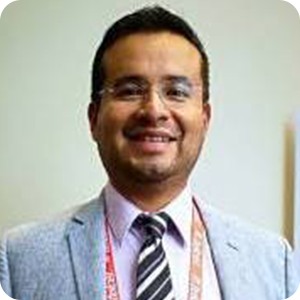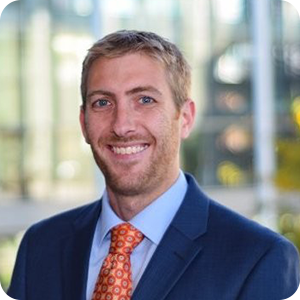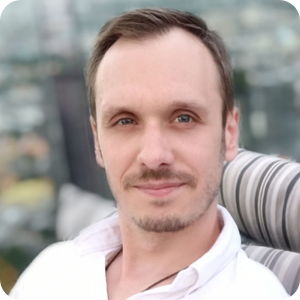Six years, 17 Sustainable Development Goals or SDGs, and one big question: will the SDGs, or at least some of them, be fully achieved by 2030 as initially planned for? This question arises from the 2024 Sustainable Development Goals Report released by the United Nations which highlights that almost half the targets are showing minimal or moderate progress, while over one-third are showing no progress at all or even going backwards. The consequences of the COVID-19 pandemic, the ongoing conflicts in Europe and the Middle East, and worsening climate change make achieving the SDGs by 2030 barely seem possible. How can we get the SDGs back on track for 2030? Check out some opinions below.
Key Takeaways:
- A UN report on SDG’s progress shows that climate change, peace and security, and inequalities among countries are the areas where the most action is needed.
- According to experts, the consequences of the global health crisis, political instability, and intensifying conflicts are further hindering efforts aimed at achieving the SDGs.
- Addressing the slow progress requires strengthened global partnerships, increased financial support, and innovative strategies.
- While some targets like Quality Education (SDG 4) and Clean Water and Sanitation (SDG 6) are showing good results, others such as Climate Action (SDG 13) and Reduced Inequalities (SDG 10) remain challenging.
DevelopmentAid: What factors are contributing to the slow progress in SDG achievement, and how can these be effectively addressed?

“The UN 2024 SDGs Report indicates that almost half of the targets are registering minimal progress, which is being influenced by several interconnected factors. Firstly, financial constraints play a significant role, particularly in developing countries where there is a lack of necessary funding to implement and sustain SDG-related initiatives. Additionally, the COVID-19 pandemic has worsened existing inequalities and diverted resources away from sustainable development efforts. Political instability and conflict in various regions are also hindering progress by disrupting governmental and non-governmental activities aimed at achieving these goals. Moreover, insufficient infrastructure and weak governance structures in some nations impede the effective implementation of SDG projects. Climate change and environmental degradation also pose significant challenges, as they directly impact the goals related to poverty, hunger, and health. To effectively address these issues, a multifaceted approach is necessary. Developed countries and international organizations can provide increased financial support to bridge funding gaps. Strengthening global partnerships and enhancing cooperation can foster knowledge and resource sharing. Additionally, investing in capacity building and governance reforms can create more resilient and efficient systems for implementing SDG-related policies. Aggressively addressing climate change through sustainable practices and technologies is crucial. Encouraging private sector involvement and leveraging innovations can drive progress. Finally, promoting inclusive policies that consider the needs of the most vulnerable populations will ensure that no one is left behind in the journey towards sustainable development. By comprehensively tackling these challenges, the pace of progress towards achieving the SDGs can be accelerated.”

“Grades are great. They show exactly how we’re doing. And right now, we’re failing. There’s no unique or single reason why the SDGs are falling behind in progress. The world in which the original Millenium Development Goals were developed, and the world in which the Sustainable Development Goals were conceptualized, is completely different from the one that exists today, as the world order shifts slowly and the Earth warms quickly. It’s a time of greater volatility and instability, which requires new frameworks and innovative approaches. The first is financing – nothing is possible without resources, and the SDG financing gap is moving in the wrong direction. Yes, member nations simply need to contribute more and find more innovative ways to do so, including sustainability bonds, innovative taxation, and debt swaps. But we must also strategize around how to do more with less. In a way, we must adopt a war footing – pushing the limits, removing bureaucratic hurdles, and making tradeoff investments in those areas with the highest potential. Conflict is everywhere: in global hotspots like Eastern Europe, the Middle East, and West and Central Africa. There is passive conflict in the slow erosion of a global hegemonic neoliberal order and the competing landscape of future ideologies that will shape the next century. And there are biological, ecological, and technological conflicts driven by a blistering pace of change that disrupts our ability to adapt, cope, and evolve. Attention – governments, institutions, and people simply have immediate and proximate needs that redirect attention and investment away from distant and distal problems.”

“Understanding the progress or the lack thereof requires understanding what the Agenda 2030 – Sustainable Development Goals intended to do differently from the previous development agenda (the Millenium Development Goals). Previously, some shortcomings in the MDGs were attributed to a lack of ownership of the development areas and the means to achieve those. The development community was the orchestrator in directing attention and efforts. The SDGs were approached with that specific criticism in mind to ensure that member states’ governments took ownership of the SDGs. The very opening of the Declaration reads: “We, the Heads of State and Government and High Representatives, […] have decided today on new global Sustainable Development Goals.” The idea behind the ownership was likely assumed to encourage governments to showcase their abilities in orchestrating development efforts in any area they chose – and with 169 targets conceptualized, there was or is plenty to choose from. By showcasing their efforts, it theoretically would inspire other governments to act so as to stimulate a cycle of encouragement. Nevertheless, having worked with governments from developing, transitional and developed countries, it became palpable that some countries either wished to follow instructions from United Nations leaders on what measures to take or other countries objected to those suggested measures. That does not mean to say all countries follow this path, but there tends to be three factors at play here: (1) one being that developing countries’ ministries simply lack the human and knowledge capital to put forth any sophisticated measures; (2) another where countries’ internal political situations prioritize concerns with maintaining power, as opposed to improving people’s lives; and (3) yet another where countries see themselves as being above the agenda, leading to the position of bystander. A combination of those factors is also noticeable – particularly in relation to rights and participation topics. Where governmental capacity and willingness fail, it has remained up to civil society and private institutions to lead by example. Even though the SDGs may fail, they should not be scrapped for yet a new development agenda but understood as the foundation to continuously build on and identify the mechanisms that worked and those that didn’t.”
DevelopmentAid: Given the current trends, what is your outlook for achieving the SDGs by 2030? Are there specific targets you believe are more achievable than others?

“Given the current trends, achieving all the SDGs by 2030 appears to be increasingly challenging. The combination of financial constraints, political instability, climate change, and the lingering impacts of the COVID-19 pandemic has significantly slowed progress. However, while the overall outlook is daunting, there are specific targets that seem more attainable than others. Targets related to Quality Education (SDG 4) and Clean Water and Sanitation (SDG 6) show relatively better progress. Investments in education technology and increased awareness about the importance of education have propelled advances in this area. Similarly, efforts to improve water infrastructure and sanitation facilities have yielded positive results in many regions. Health-related targets (SDG 3) also have the potential for significant progress, especially with advances in medical technology and an increased global focus on healthcare systems due to the pandemic. Innovations in vaccines and treatments, along with strengthened health policies, can drive improvements in this area. Conversely, targets related to Climate Action (SDG 13) and Reduced Inequalities (SDG 10) remain particularly challenging. The complexities of global climate policies and the persistent socio-economic disparities require coordinated and sustained efforts across multiple fronts. To improve the outlook, it is essential to intensify international cooperation, leverage technological advances, and prioritize sustainable investments. Fostering inclusive policies and ensuring robust monitoring and accountability mechanisms can further support progress. While the 2030 timeline is ambitious, focusing on achievable targets and implementing comprehensive strategies can still yield substantial improvements in global sustainable development.”

“While a global grade lays bare our current overall state, it obscures details and fails to provide context for a richer story. In the case of the SDGs, progress has been uneven, but it is still visible. Notably, SDG 7 (Affordable and Clean Energy), SDG 12 (Responsible Consumption and Production), and SDG 17 (Partnerships for the Goals), along with related sub-goals, have made impressive gains over the last nine years. To close the gap on other SDGs, trade-offs and creativity are required. It’s unlikely that we will achieve everything – and when there are 17 urgent priorities, it’s difficult to prioritize accordingly. We must close the finance gap, but we must do so with calculated strategy and optimistic objectivity. We need to learn to cope and find areas of mutual interest and success in this uncertain world order. And we must tell a better story. Around the world, in nearly every country and culture, the story of the underdog resonates. Everyone loves a turnaround story. We – all of us – are now the underdogs. We need resources, strategic action, and a compelling collective narrative to shape the next chapter of this story.”
To stand out in the highly competitive international development job market, candidates require a strategic approach and access to exclusive information. With the DevelopmentAid Individual Professional Membership, experts gain access to a plethora of resources tailored to help them to more easily navigate their professional journey. They can access more than 6,500 job opportunities related to international development, the detailed profiles of organizations and donors, access to tenders and grants for individuals, along with the ability to customize job, tender, and grant alerts. Additionally, members can take advantage of CV tools and services, including a CV generation tool, discounts on CV broadcasts, and tailored CV and cover letter revisions.

